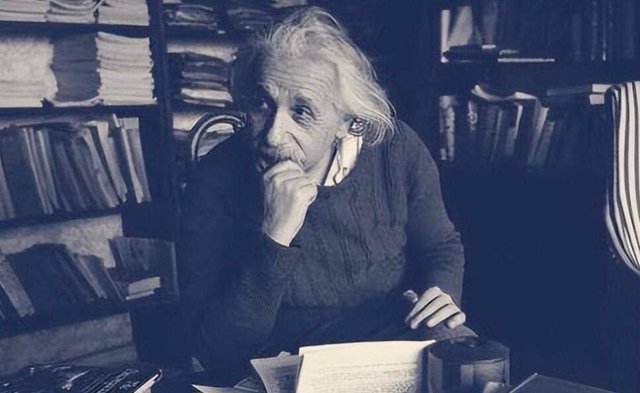爱因斯坦提出的《相对论》中,有一个核心思想被称为“光速不可超越”,这可以简单地描述为:任何具有静质量的物体都不可能达到或超过光速,除此之外,任何信息的传递速度也不能超过光速(注:本文中的光速是指真空中的光速,为方便描述,我们将其简称为光速,请注意区分)。

虽然该理论早已得到了科学界的认同,但不少人仍然对此感到难以接受,并提出了各式各样的思想实验,试图说明至少在“信息的传递速度”这方面,超光速应该是可以实现的,例如有人就提出了这样一个思想实验:一根30万公里长的绳子,能否实现超光速?
这个思想实验的思路大概是这样的,在日常生活中,假如甲和乙两个人各自拉着绳子的两端,那甲拉一下绳子,乙瞬间就感觉得到,所以如果甲和乙事先商量好拉绳子的各种细节(例如频率、力度等等)分别代表什么,那他们就可以通过绳子来传递信息。
现在将甲和乙拉着的绳子的长度设为30公里,而光速大概是每秒30万公里,也就是说,以光速前进,跑完30公里就需要1秒的时间,而由于甲拉一下绳子,乙瞬间就感觉得到,因此在这种情况下,就有可能实现以超光速传递信息。

可以看到,在这个思想实验中,想要实现超光速的关键点在于:甲拉绳子所产生的力会瞬间传递到绳子的另一端,进而被乙感觉到。那实际情况是否真是这样呢?很遗憾,答案是否定的。
绳子可以认为是一种固体,从微观层面来看,它其实是大量的原子构成的,也就是说,在绳子的内部,原子和原子之间通过彼此间的相互作用,以特定的方式排列并紧密地结合在一起。在这种情况下,甲拉绳子所产生的力其实并不会瞬间作用到构成绳子的所有原子,而是有一个传递的过程。
我们可以将这个过程简单地理解为,在甲拉了一下绳子之后,其产生的力会首先作用于离他这一端的最近的“第一层”原子,这些原子在受力之后会发生位移,进而带动更远的“第二层”原子,而“第二层”的原子在发生位移之后,又会去带动更远的“第三层”原子……并如此“层层传递”,直到力传递到乙的那一端。

(↑机械波在介质中传播的简化模型)
由此可见,甲拉绳子所产生的力,在绳子的内部其实是以机械波的形式传递的,从理论上来讲,机械波在介质中的传播速度(v)与介质的弹性模量(K)和介质的密度(ρ)密切相关,可以用一个简单的公式“v = √(K/ρ)”来进行计算。
这里我们不妨假设这个思想实验中的绳子是钢丝绳,已知钢的密度大约为每立方米7.85 x 10^3千克,钢丝绳的弹性模量可以取值为200GPa,将其代入公式可得,在钢丝绳的内部,机械波的传播速度大约为每秒5公里。
在日常生活中,我们用的绳子一般都不会超过50米,也就是说,假设有一根50米的钢丝绳,甲拉一下绳子,那么乙在大约0.01秒之后就会感觉到,由于这么短的延迟时间,我们人类是很难察觉到的,因此通常我们都会认为这是瞬间感觉到的。

但对于一根30万公里长的绳子而言,情况就完全不一样了,简单计算一下可知,如果这根绳子是钢丝绳的话,那在甲拉了绳子之后,乙就需要大约1000分钟的时间才能感觉到,很明显,如此长的延迟时间,根本就算不上“瞬间感觉到”。
尽管绳子材质的不同会造成机械波的传播速度出现差异,但也差不了太多(相对于光速来讲),就算是目前被认为可以用来做绳子最佳材料——碳纳米管,其弹性模量和密度可以达到1TPa和每立方米2.1 x 10^3千克,机械波在其中的传播速度也只有大约每秒690公里,这仍然远远地低于光速,就更不用谈去实现超光速了。

(碳纳米管)
看到这里可能有人会问了,如果用一种弹性模量无限大的材料来做绳子,是不是就可以实现以超光速传递信息了呢?从理论上来讲,确实是这样的,但实际上,弹性模量无限大的材料其实就是“绝对刚体”,而我们都知道,至少在我们所知的宇宙中,“绝对刚体”是不可能存在的。
In the "Theory of Relativity" proposed by Einstein, there is a core idea called "the speed of light cannot be exceeded", which can be simply described as: any object with static mass cannot reach or exceed the speed of light. In addition, any object with static mass cannot reach or exceed the speed of light. The transmission speed of information cannot exceed the speed of light (Note: The speed of light in this article refers to the speed of light in a vacuum. For convenience of description, we will refer to it as the speed of light for short. Please pay attention to the distinction).
Although this theory has long been recognized by the scientific community, many people still find it difficult to accept it and have proposed various thought experiments to try to explain that at least in terms of "information transmission speed", superluminal speed should be It can be achieved. For example, someone proposed this thought experiment: Can a 300,000-kilometer-long rope achieve super-light speed?
The idea of this thought experiment is roughly like this. In daily life, if A and B each pull the two ends of the rope, then A pulls the rope, and B can feel it instantly. Therefore, if A and B have agreed in advance to pull the rope, What do the various details of the rope (such as frequency, strength, etc.) represent, then they can transmit information through the rope.
Now set the length of the rope pulled by A and B to 30 kilometers, and the speed of light is about 300,000 kilometers per second. In other words, it takes 1 second to run 30 kilometers at the speed of light, and because A pulls B can feel the rope instantly, so in this case, it is possible to transmit information at super-light speed.
It can be seen that in this thought experiment, the key point to achieve super-light speed is: the force generated by A pulling the rope will be instantly transmitted to the other end of the rope, and then felt by B. Is this really the case? Unfortunately, the answer is no.
A rope can be considered a solid. From a microscopic level, it is actually made up of a large number of atoms. That is to say, inside the rope, atoms and atoms interact with each other and are arranged in a specific way. tightly together. In this case, the force generated by A pulling the rope does not actually act on all the atoms that make up the rope instantly, but there is a process of transmission.
We can simply understand this process as, after A pulls the rope, the force generated will first act on the "first layer" atoms closest to his end. These atoms will be displaced after receiving the force. Then it drives the atoms in the "second layer" that are farther away, and after the atoms in the "second layer" are displaced, they will drive the atoms in the "third layer" that are farther away... and this is "transmitted layer by layer" until the force Passed to B's end.
(↑Simplified model of mechanical wave propagation in media)
It can be seen that the force generated by A pulling the rope is actually transmitted in the form of mechanical waves inside the rope. Theoretically speaking, the propagation speed of mechanical waves in the medium (v) is related to the elastic modulus (K) of the medium and The density of the medium (ρ) is closely related and can be calculated using a simple formula "v = √(K/ρ)".
Here we might as well assume that the rope in this thought experiment is a steel wire rope. It is known that the density of steel is approximately 7.85 x 10^3 kilograms per cubic meter. The elastic modulus of the steel wire rope can be 200GPa. Substitute it into the formula to get Inside, mechanical waves travel at about 5 kilometers per second.
In daily life, the ropes we use generally do not exceed 50 meters. That is to say, assuming there is a 50-meter steel wire rope, and A pulls the rope, B will feel it in about 0.01 seconds. Because of such a short Delay time is difficult for us humans to detect, so we usually think that it is felt instantaneously.
But for a 300,000-kilometer-long rope, the situation is completely different. A simple calculation shows that if the rope is a steel wire rope, after A pulls the rope, it will take B about 1,000 minutes to Feeling, obviously, such a long delay cannot be considered "instantaneous feeling" at all.
Although different rope materials will cause differences in the propagation speed of mechanical waves, they are not much different (relative to the speed of light). Even carbon nanotubes, which are currently considered the best materials for making ropes, have elastic modulus The volume and density can reach 1TPa and 2.1 x 10^3 kilograms per cubic meter, and the propagation speed of mechanical waves in it is only about 690 kilometers per second, which is still far lower than the speed of light, let alone achieving super-light speed.
(carbon nanotubes)
Seeing this, some people may ask, if a material with an infinite elastic modulus is used to make a rope, will it be possible to transmit information at super-light speed? Theoretically, this is indeed the case, but in fact, a material with infinite elastic modulus is actually an "absolute rigid body", and we all know that, at least in the universe we know, "absolute rigid bodies" cannot exist. of.